We Drove the Greatest Porsche 911 (n)Ever Built
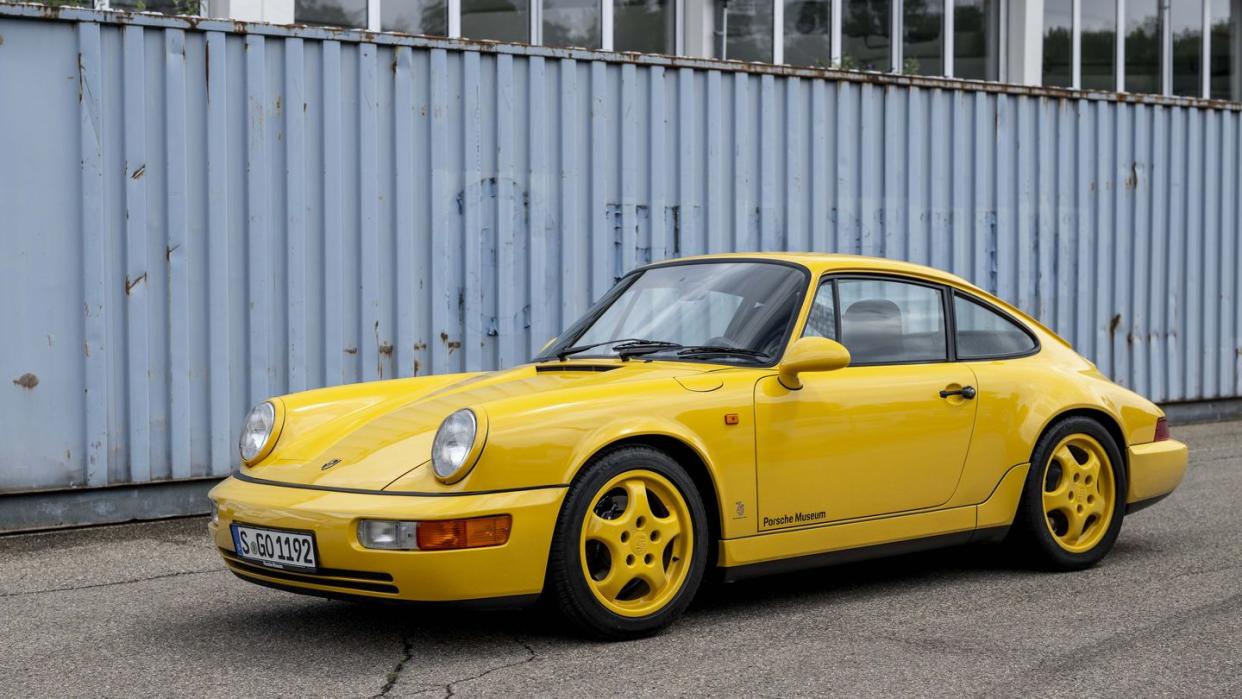
To celebrate the launch of its latest (and absolute greatest) Boxster variant, Porsche cracked open its vault. From a Wonkaesque hangar outside Stuttgart, a procession of classics marched forth. These eight cars were meant to highlight Porsche’s other lineages, great cars that, like the Boxster, feel sidelined by Porsche’s defining bug-eyed flagship. So out wheeled a 959, an uber-rare 944 Turbo Cab, and sporty versions of its Cayenne and Panamera four-doors, among others.
But for one reason or another, a pair of Neunelfers sneaked into the fold of eight. The first, a Carrera 3.2 Coupé Clubsport, easily spotted by the “CS” graphics pasted on its white flanks. Porsche built just 189 units of the 3.2 CS and this exact car was a pre-production model from 1985. Next to that, a school-bus yellow on school-bus yellow 964. This one, called the Carrera 2 Clubsport, ported in from 1992 (if the colorway didn’t tip you off).
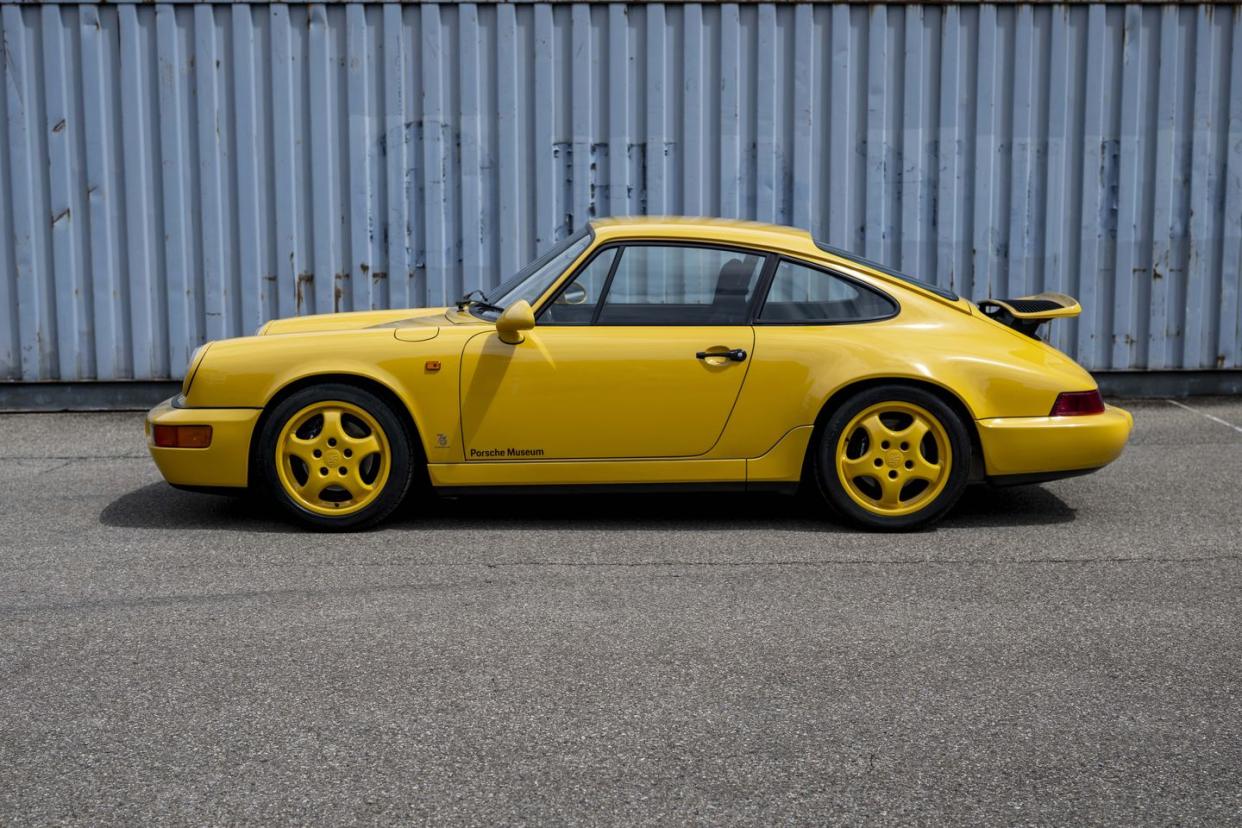
More on this 964: According to Porsche, this yellow Carrera 2 CS was meant to slot between the 911 Carrera 2 and Carrera RS trims. The CS was to be “strongly oriented toward motorsport”—like the race-car-adjacent, diehard RS—but also road legal in Germany and the U.S., its target market. So Porsche lowered the Carrera 2’s body by 20 millimeters and matched a special set of 17-inch wheels to each car’s body color. Comfort features were pared away in favor of bucket seats with color-matched shells, plus a roll cage. Yet, this CS didn’t go full RS; air-con was included and the car maintains a drive-all-day. Conditions were perfect.
However, Porsche never put the yellow CS on sale. 1992 neared the end of the line for the 964 chassis, just before the introduction of the 993 in 1994. Whether it was the business case or the timing of the thing—or maybe some mix of the two—the CS never made it to full production.
That’s a shame, because the CS prototype is easily the best 911 I’ve ever driven. Not in its outright capability or its beauty or a sense of nostalgia or even its ability to ignite raw emotion, but by virtue of balance.
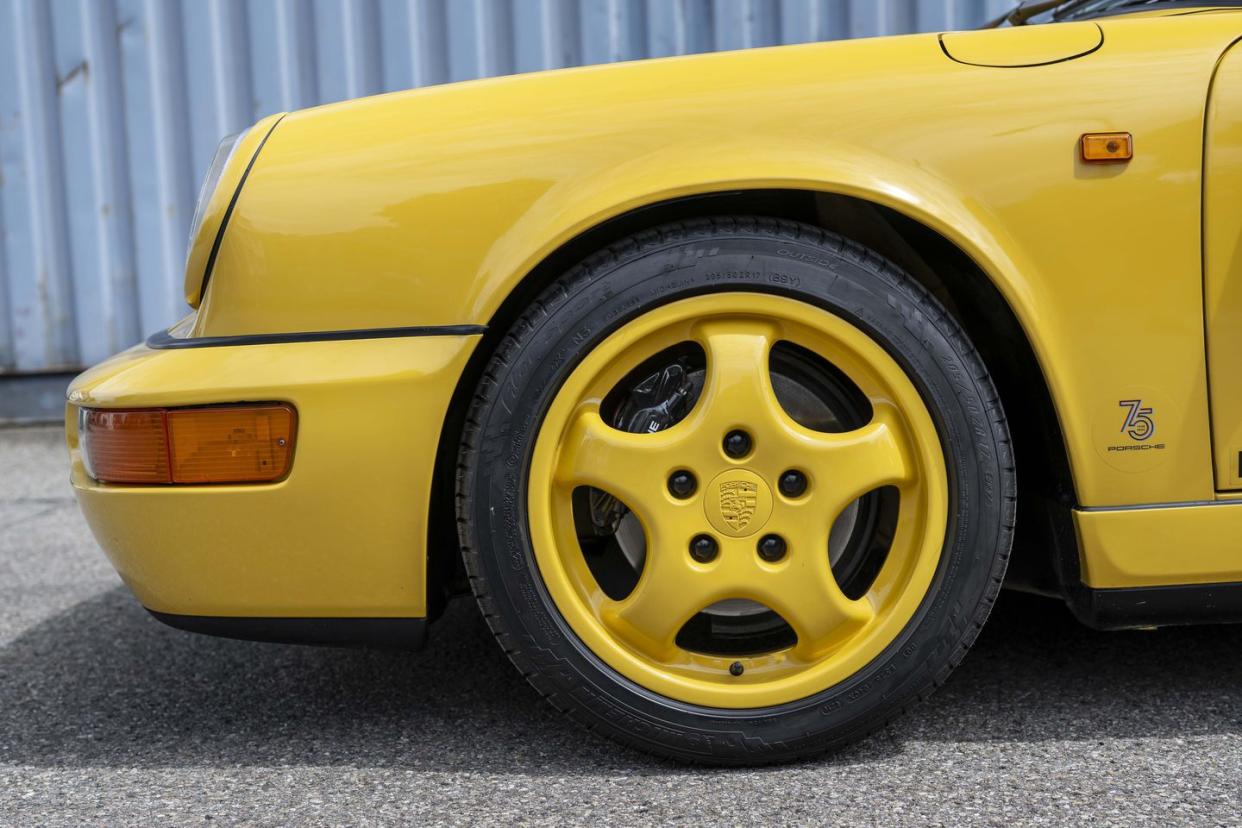
Modern GT3s come very close to snatching the crown. They’re nearly faultless sports cars (if you’re willing and able to jump through the dealership hoops to land one) and I’ve praised them extensively. No modern engines aside from Ferrari’s naturally-aspirated V-12 and Lambo’s bonkers NA V-10 can compete with the thrill of ripping a GT3’s 4.0-liter flat-six up to nine grand.
But on the narrow German backroads where we sampled Porsche’s classic fleet, a modern GT3 simply takes up too much space. It’s too big. The heft of a vehicle feels magnified on roads like these, pencil-thin byways sprinting from one charming German hamlet to the next, asphalt draped like linguine from the hillsides. Every time I squeezed a Cayenne or a Panamera past another vehicle on these roads, I'd need another 30 seconds before the color returned to my knuckles. Keep in mind a modern GT3 is just 9 cm narrower than the current Panamera, about the width of your hand.
Maybe that’s not as much of a problem on American roads, but if you intend to use a car daily, I’d argue it is. There’s a reason I take the Miata instead of the Tacoma when I pop into downtown Seattle on errands: every last bit of width pared away takes a few points off my blood pressure when backing between six-figure tech-bro chariots.
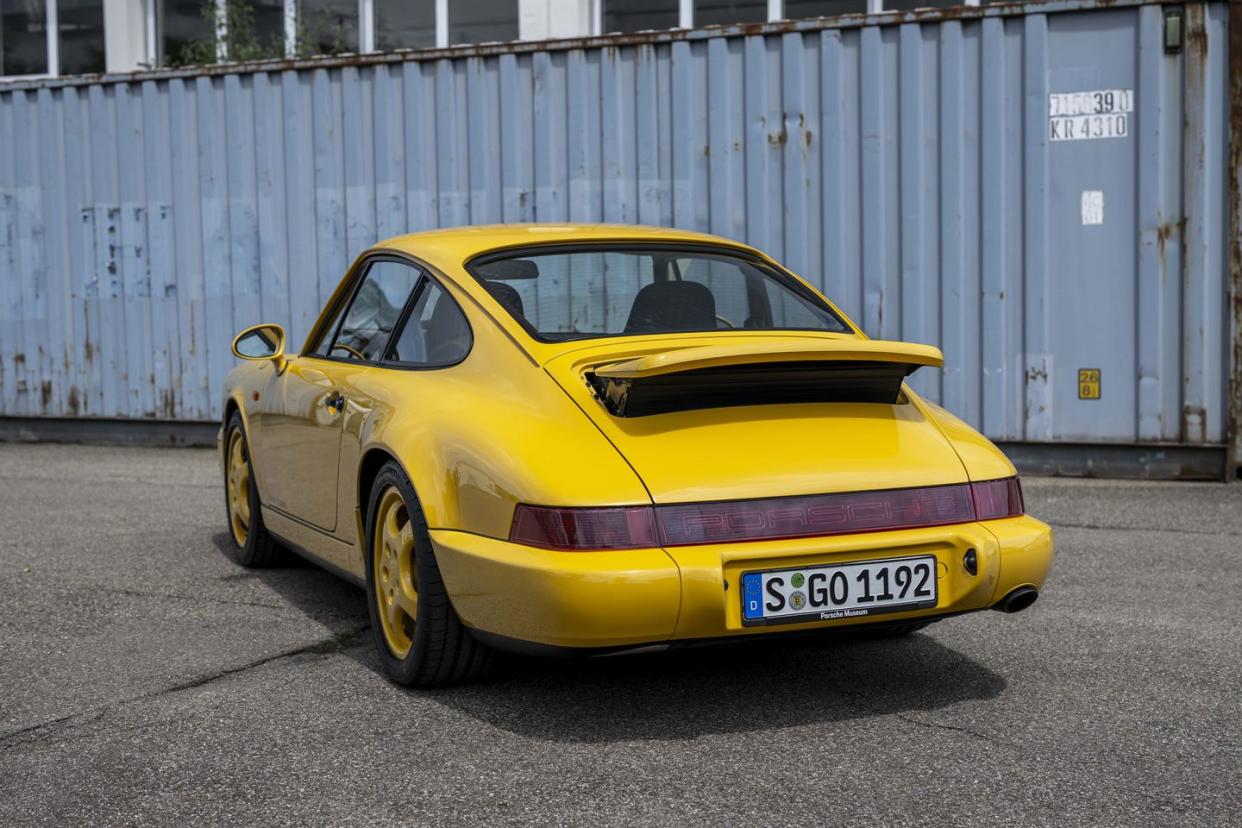
The 964 offers less of everything compared to its modern counterparts. Less weight, less width, less power, less complexity. If you can’t understand the virtues that smaller and lighter and simpler bring to a sports car, you’re on the wrong website.
Then again, you don’t want to go too simple.
To that end, I was thankful the 1985 CS was on hand to lend context. It’s lighter and simpler than this yellow 964 still. Thanks to some factory voodoo, the CS's 3.2-liter flat-six felt far punchier than the 964’s 3.6-liter mill. The chassis was set up to produce an eager, darting nose, and Porsche paired that eagerness to a massive diet program that included touches like alloy doors. All told, the featherweight CS weighs 2557 lbs, light enough that it wafted between the edges of the road when ripped up to felonious speeds.
It felt alive.
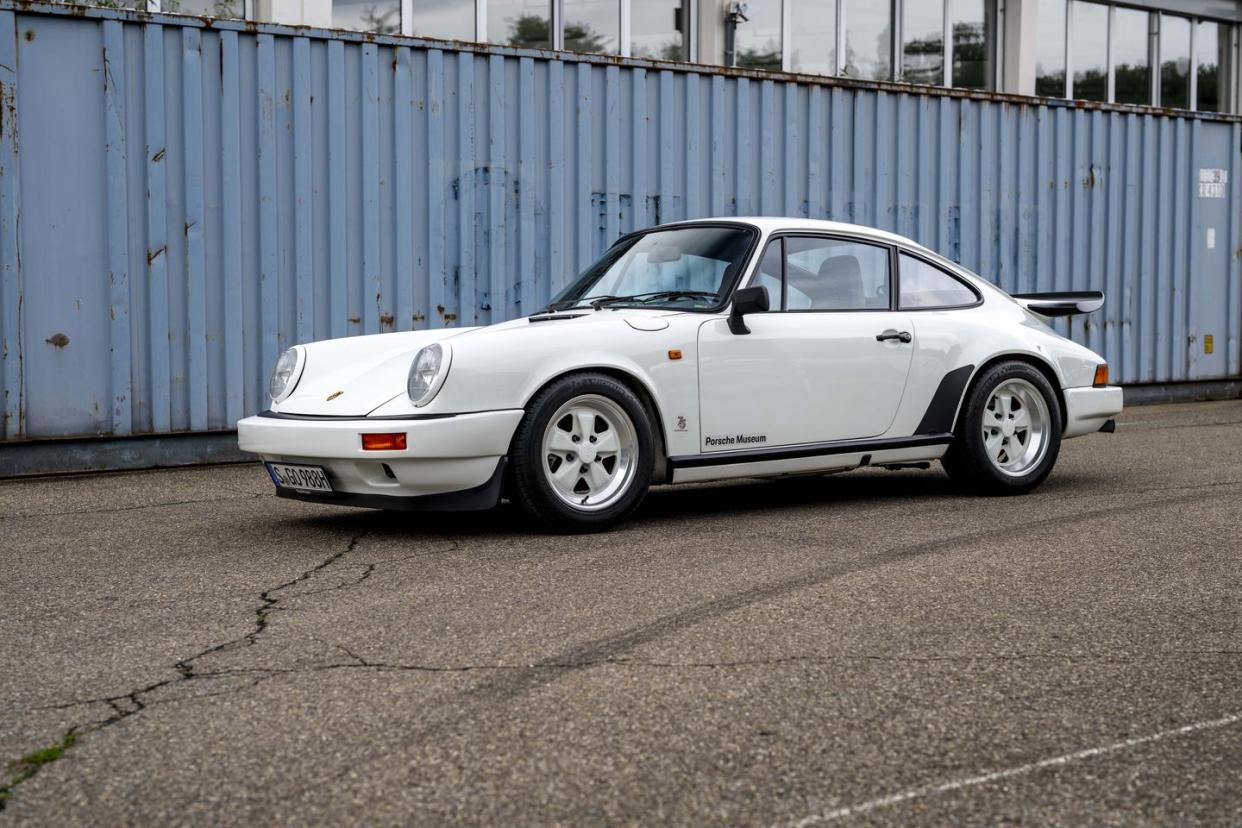
But the ’85 CS also felt… old. I’ve heard the line parroted over and over by Porschephiles, the one which explains how classic 911s feel “modern.” Maybe that was true enough in the mid-Eighties, but no pre-964 911 I’ve driven has felt up to current standards from a standpoint of livability.
I dailied a ’69 912 for a good year. That car felt positively stone-aged in modern traffic. Part of that was the lack of seatbelts (IN THIS CAR WE DIE LIKE SPARTANS), but most of it was how the heater never seemed to warm up enough to pull fog from the windshield, the anemic fan wheezed air through the cabin, and the wiper blades were about as interested in batting back rain as my wife is interested me hanging a third carbon bike from the garage wall. (You need an aero frame with a 1x chainring for racing, a gravel bike with tire clearance for touring, and a featherweight for climbing. This nuance is rebuffed by her eyerolls.)
From behind the wheel of this mid-Eighties CS, not much is changed. Before updating the 911’s interior layout and materials for the 964 chassis, Porsche pretty much stuck with the recipe it set in the late Sixties. That means a vehicle from 1985 that looks, feels, and even smells like a car from 1965.
In the context of 2023, the 964 feels just updated enough without ever feeling beyond essential. Its HVAC controls and seat placement and switchgear and million other tiny touchpoints just feel easier to find and use and live with than classic 911s.
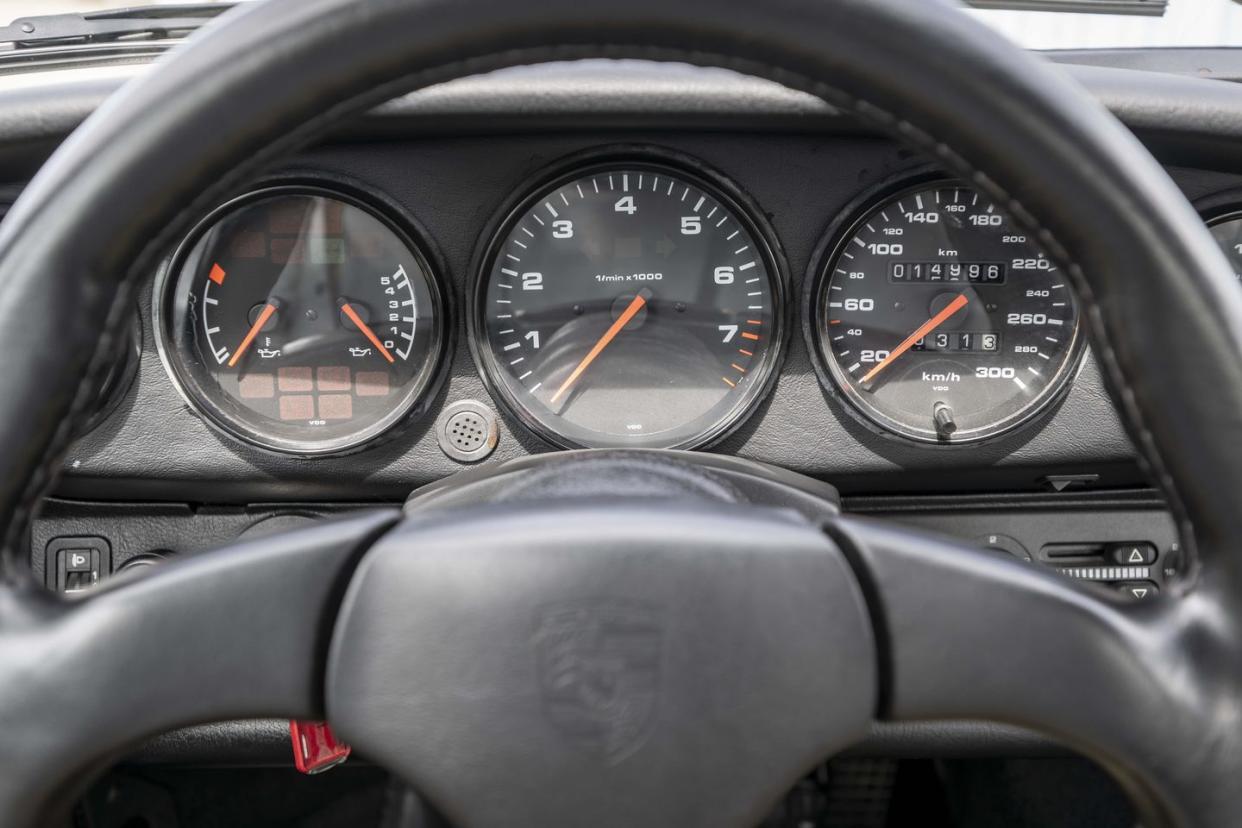
Those 964 sport seats are a great example. On the earlier car, there’s Porsche’s classic sarcophagus-shaped sports thrones. These seats have foam padding arranged like a couple muffin tops stuck together at a crude angle. They don’t offer much by way of lateral support for your hips and shoulders. When you wrestle the white CS’s nose into a 25-mph hairpin—but especially when you’re entering said hairpin at about 55—the seat lets your torso flop against the door panel and the whole maneuver feels like white-knuckling the bar on an escaped carnival ride.
The 964’s buckets do just the opposite. For people with thinner, taller frames like myself, you sort of fall into the arms of the thing. The seatback is angled upright but with a perfect hip angle, taking advantage of the 911’s prodigious greenhouse by perching you right over the steering wheel where you can best command the 964’s talents. (For all the crap I’ve just talked about old 911s, nothing else matches the view over those fenders, the way you point a 911 like you’ve just notched an arrow to your bowstring.)
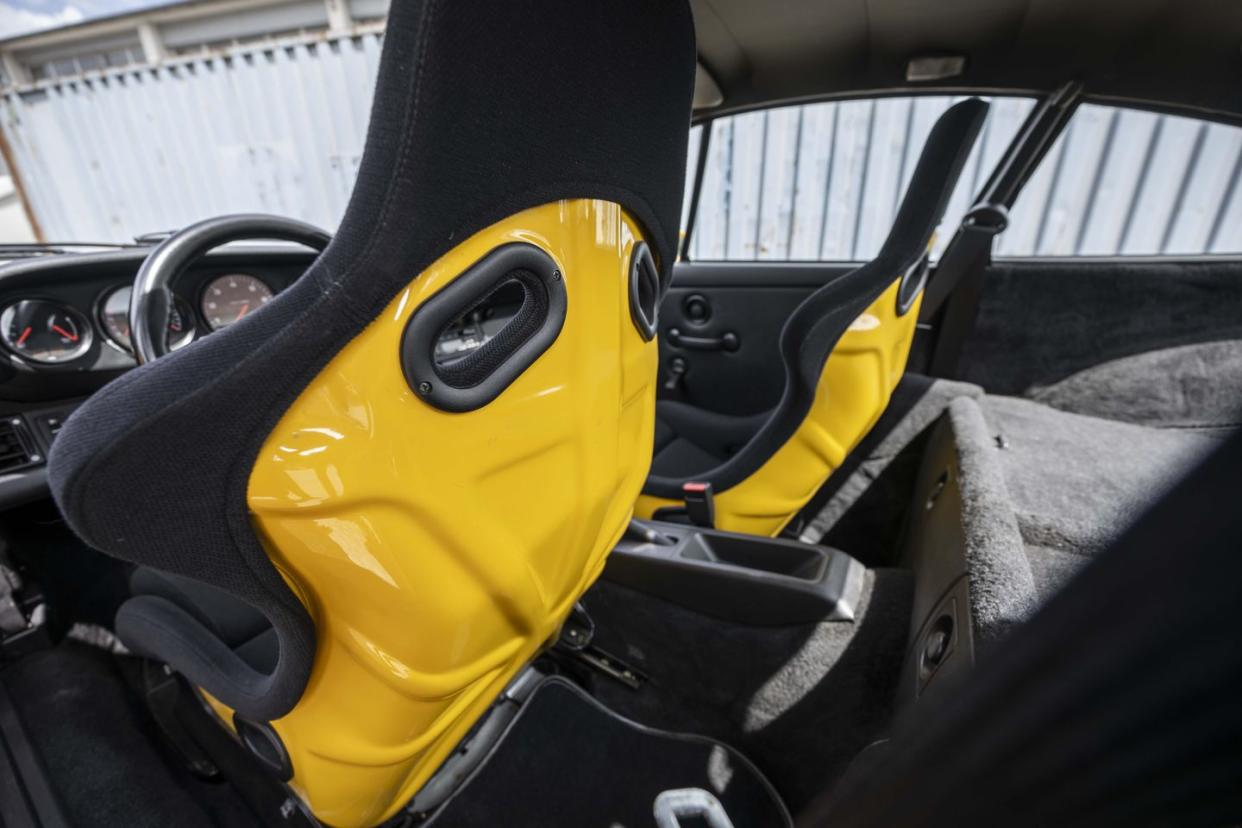
It’s these many little things that separate the two 911 CS, but also one huge one.
I’ve never got along with early 911 gearboxes, the 901s and 915s that carried Porsche from a Postwar curiosity until the late Eighties, when people were eyeing the Berlin Wall with sledgehammers.
With the 915 in particular—in absolutely any guise I’ve experienced it—the gear selection feels more like whacking a nine iron around the inside of a soup pot than any sort of intuitive shifting process. There’s a huge amount of lateral slack present in any of the forward gears, the throws are languid and long, and unless you nail the timing with absolute perfection, you’re likely to hear a graunch-clunk from the ‘box if you’re trying to work it quickly, which you’ll be doing often, because of the Porsche badges on your car.
There’s a counterpoint here, one once rendered in frustrated tones by former R&T staffer and current dorkus gentleman of esteem Sam Smith: Porsche’s ancient gearboxes can be worked seamlessly if only you bring the appropriate level of skill. Smith cited Hurley Haywood and Brian Redman and a billion other chisel-jawed legends and explained how they banged between gears without use of the clutch, both quickly and precisely, just as I’d first learned to do on farming grain trucks.
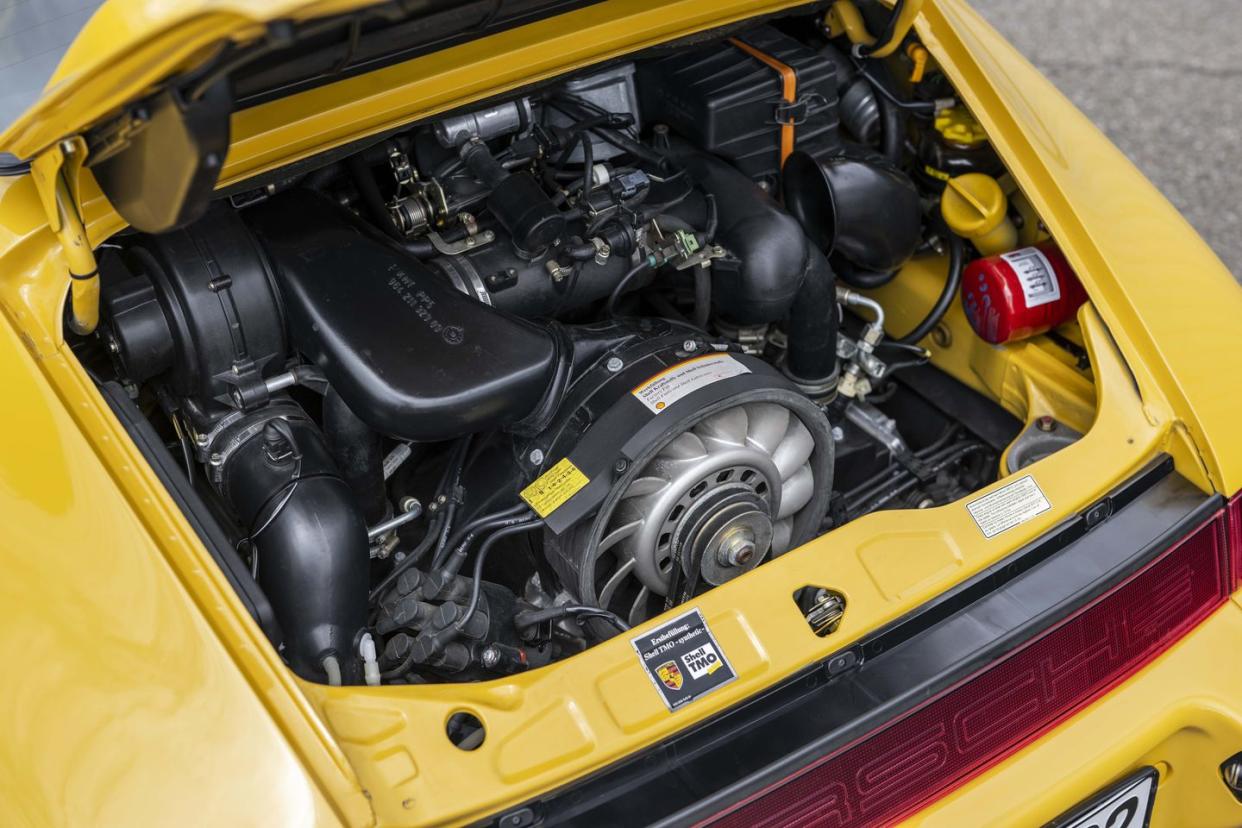
Problem is, I’m not of the caliber of those drivers on my best days. Nor do I particularly enjoy approaching a run to Safeway with the sort of intense focus required to pull downshifts into Mulsanne corner. There’s no classic sports car we make allowances for in the same way and these ‘boxes have always dulled the 911 experience for me to a point where I’m not interested in owning a car with a 915 transaxle.
[Another note: before the Porschephiles raise their Martini-liveried pitchforks, the answer is “yes,” I have driven a mountain of “good” 915s. None were, in fact, very good.]
That said, the 964’s G50 transaxle rights the ship, tightening the shift action in all respects, offering an arm over the shoulder rather than a Rubiks Cube that must be shuffled into each corner (and if memory serves, the earlier CS prototype received the G50 in production guise, further proof of my thesis). It’s that simple for me. The right transaxle, an updated suspension design, and a few interior aesthetic changes transform the earlier CS from a very very compelling sports car into the best 911 I’ve ever driven, one with the perfect mix of on-road manners and that sense of run-all-day quality that only track-oriented cars are endowed with. The 964 CS sounds like howling perfection, feels pared back without being prison-like, has enough thrust to get frisky sideways in sweepers, and enough damping that you dream of road trips that span continents.
You can have your Turbos and Speedsters and 2.7 RS and GT3s. When I imagine a perfect 911 moving forward, it’ll simply be a streak of dandelion yellow slashing through my mind’s eye.
You Might Also Like
